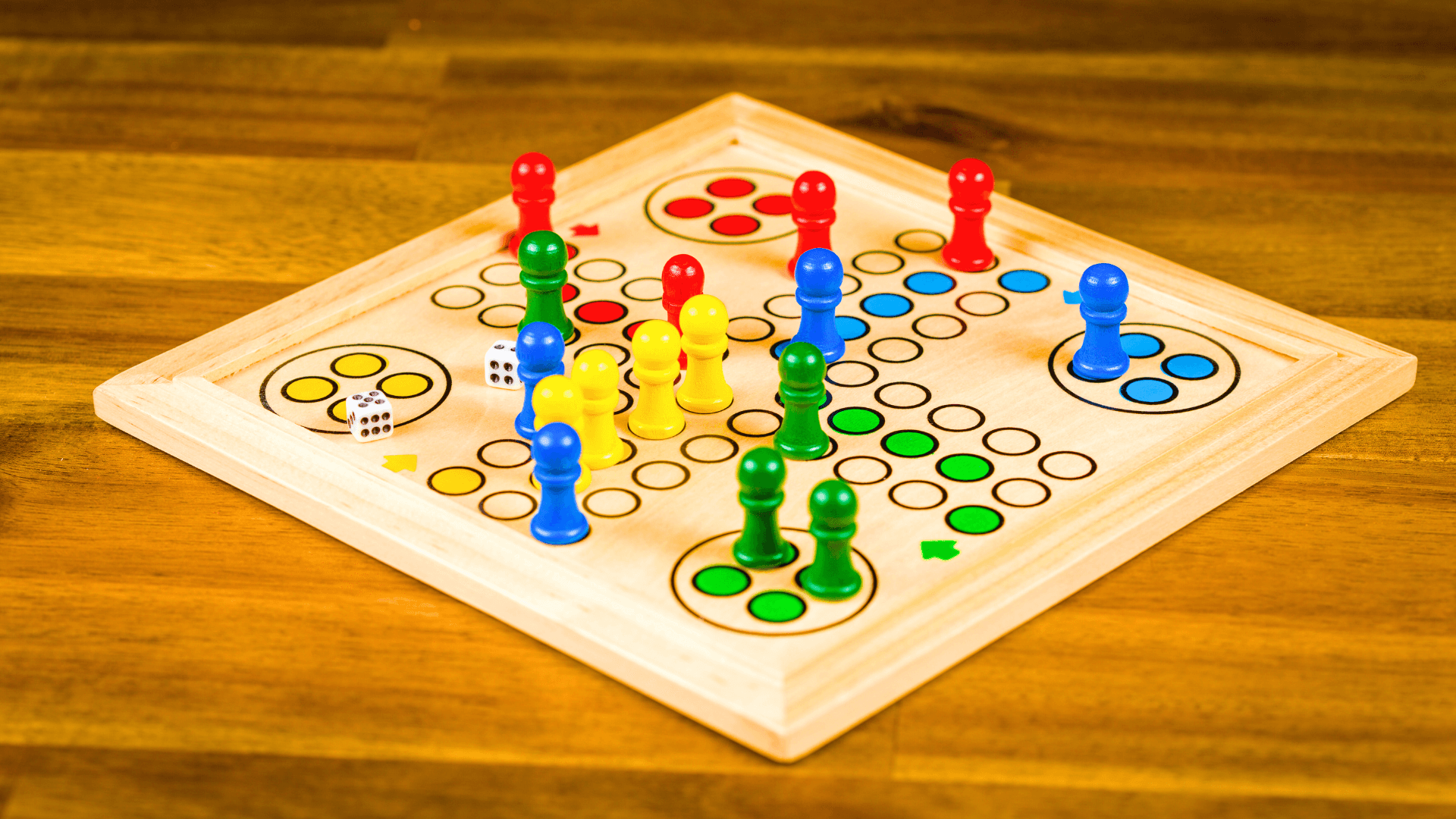Backend development for real-time multiplayer Ludo

Backend Development for Real-Time Multiplayer Ludo
Ludo game development bring to mind countless memories of rolling dice with friends and family. But today, Ludo is not just about sitting around a table. It has made its way into the digital world, allowing millions of players to connect online and enjoy it in real time. Behind this simple-looking game lies a complex system of backend development that makes real-time multiplayer experiences possible.
In this blog, we will explore backend development for real-time multiplayer Ludo. We will cover everything from the basics of server architecture to database design, handling concurrent players, ensuring low latency, and dealing with scaling challenges. By the end, you will have a human-friendly understanding of what it takes to make the digital version of this classic board game run smoothly.
Why Backend Development is Crucial for Ludo
When we open a Ludo app, we rarely think about the processes happening behind the scenes. The dice rolls, the movement of tokens, the joining of players, and even the handling of disconnections are all managed by the backend. Without a well-structured backend, a Ludo game would lag, crash, or worse, fail to synchronize between players.
The backend acts as the backbone of the game. It ensures that the rules are enforced fairly, data is consistent across devices, and the experience is seamless no matter where players are located. For a real-time multiplayer game like Ludo, backend development is not optional. It is the heart of the entire ecosystem.
Key Components of Backend Development for Ludo
To better understand how backend development works for a real-time Ludo game, let us break down the major components:
1. Server Architecture
The server is the foundation. Developers often choose between monolithic and microservices architecture. For smaller games, a monolithic setup might be enough. But for Ludo, where millions may play simultaneously, microservices or distributed architecture works better.
2. Real-Time Communication
At the core of multiplayer gameplay is real-time communication. WebSockets are the most commonly used technology here. They allow instant two-way communication between players and the server, which is crucial for dice rolls, token moves, and chat messages.
3. Database Management
Every player’s profile, game state, scores, and progress need to be stored. Databases like PostgreSQL, MongoDB, or Redis are often used. Redis is particularly effective for handling fast, temporary data such as the current state of an ongoing match.
4. Game State Synchronization
The backend ensures all players see the same game board in real time. If one player moves a token, others should instantly see the update. Synchronization is key to maintaining fairness.
5. Security and Fair Play
Ludo involves dice rolls, which must be generated randomly and securely. The backend must prevent cheating, ensure no one manipulates results, and protect player data.
Handling Real-Time Challenges
Building a Ludo backend is not as simple as writing a few lines of code. Developers must solve several real-world challenges:
Latency
A slight delay in a dice roll can ruin the gaming experience. To minimize latency, servers are often deployed in multiple regions worldwide, and CDNs are used to deliver data quickly.
Scalability
On a weekend evening, millions of players might log in at once. The backend must scale automatically to handle this surge. Cloud services like AWS, Azure, or Google Cloud are commonly used for scalability.
Concurrency
Imagine 50,000 Ludo matches happening simultaneously. The backend must track every match, every move, and every player in real time without mixing them up.
Disconnects and Reconnects
Players lose internet connections frequently. A strong backend ensures that when a player reconnects, the game continues from where they left off.
Backend Technologies for Ludo
The tech stack chosen for backend development plays a huge role in performance and scalability. Some popular choices include:
-
Node.js with Socket.IO: Great for real-time communication.
-
Go or Elixir: Excellent for handling concurrency at scale.
-
Redis: For caching and game state management.
-
PostgreSQL or MongoDB: For storing persistent player data.
The choice of technology depends on the scale of the game and the expertise of the team.
Designing the Matchmaking System
One of the most exciting aspects of playing online Ludo is matchmaking. The backend is responsible for pairing players together. This system can be simple, where players are matched randomly, or more advanced, where skill levels and rankings are considered.
A good matchmaking system ensures fair competition. It prevents a new player from being matched against someone with years of experience. This balance keeps players engaged and coming back.
Ensuring Fair Dice Rolls
In traditional Ludo, dice rolls are random. But in digital Ludo, randomness must be generated by the backend in a way that cannot be predicted or manipulated. Random Number Generators (RNGs) are used, often backed by cryptographic methods to ensure fairness.
If dice rolls were generated on the client side, cheating would be easy. That is why all dice logic should be handled on the server.
Scalability and Load Balancing
As the user base grows, scaling the backend becomes critical. Load balancers distribute requests across multiple servers, ensuring no single server is overwhelmed. Auto-scaling groups can be set up to add more servers during peak hours and reduce them when traffic is low.
This scalability ensures that whether 100 or 100,000 players are online, the experience remains smooth.
Monetization and Backend Role
Many online Ludo games generate revenue through ads, premium memberships, or in-game purchases. The backend manages payment gateways, transaction security, and inventory systems for virtual items. Without a secure backend, monetization would be risky and prone to fraud.
Testing and Quality Assurance
A real-time multiplayer game like Ludo cannot afford bugs in production. The backend must go through rigorous testing, including:
-
Load Testing: To ensure the server can handle thousands of concurrent players.
-
Latency Testing: To minimize delays in moves and dice rolls.
-
Security Testing: To prevent cheating and data breaches.
Testing is continuous, even after launch. Updates and patches are rolled out frequently to keep the game secure and optimized.
Human Side of Backend Development
Behind all the code and servers are developers, testers, and architects working tirelessly. They face the pressure of ensuring players have fun without worrying about the technical details. Every time a player rolls the dice and smiles, it is the result of countless hours of backend work.
The beauty of backend development lies in its invisibility. If done right, no one notices it. Players simply enjoy the game, unaware of the sophisticated system ensuring fairness, speed, and reliability.
Future of Backend in Ludo
With technology advancing, the backend for Ludo games will continue to evolve. AI-driven matchmaking, blockchain-based fairness verification, and cross-platform integration are some of the future possibilities. Cloud-native architectures and edge computing will further reduce latency, making the game smoother than ever.
Conclusion
Backend development for real-time multiplayer Ludo is both a challenge and an art. It involves designing robust servers, managing databases, ensuring fair play, and handling millions of players seamlessly. From dice rolls to matchmaking, every small detail is managed by the backend.
The next time you enjoy a smooth game of online Ludo, remember that behind the fun lies a sophisticated system ensuring fairness and speed. Developers work tirelessly to bring the traditional board game into the digital age, allowing people to connect globally.
Ludo game development, Ludo game development, Ludo game development. It is more than just creating a game. It is about building an ecosystem where technology and entertainment meet, creating memories that last just like the classic board game we all grew up loving.






